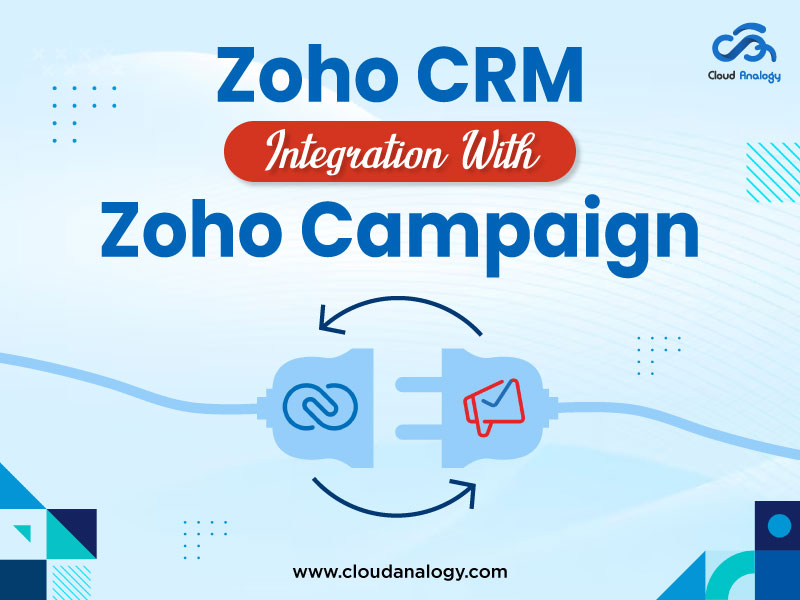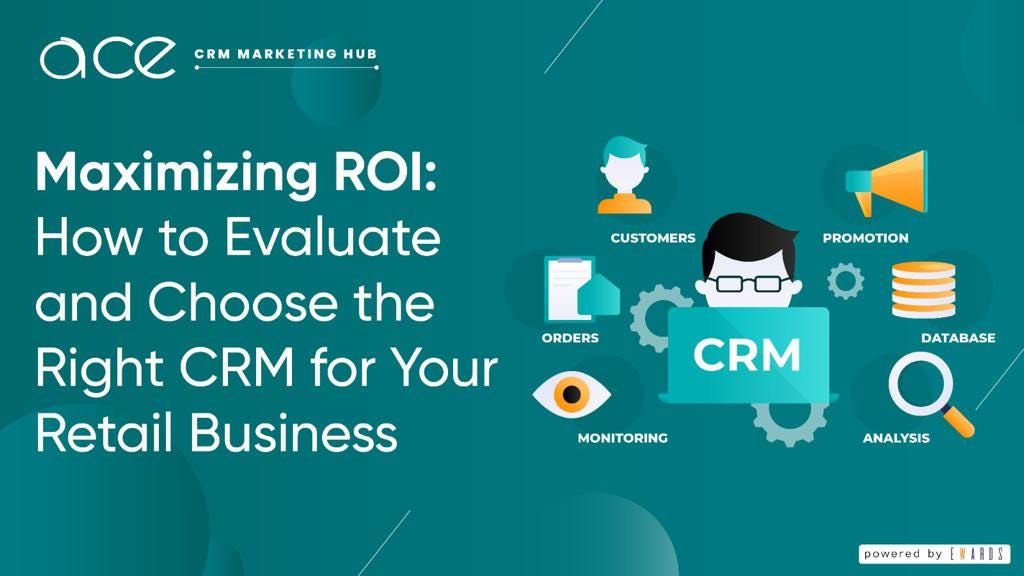
Supercharge Your Business: A Deep Dive into CRM Integration with Zoho
In today’s fast-paced business world, staying ahead of the curve requires more than just a great product or service. It demands a seamless, efficient, and customer-centric approach. This is where Customer Relationship Management (CRM) systems come into play. And when it comes to CRM, Zoho is a name that consistently ranks high. But simply having a CRM isn’t enough; you need to integrate it effectively with other tools and platforms to truly unlock its potential. This article delves into the intricacies of CRM integration, with a particular focus on Zoho, exploring the benefits, strategies, and best practices to help you transform your business operations.
Why CRM Integration Matters
Before we dive into Zoho-specific integrations, let’s understand the fundamental importance of integrating your CRM. Think of your CRM as the central nervous system of your customer interactions. It houses vital information, tracks interactions, and helps you understand your customers better. However, if this system operates in isolation, its power is severely limited. Integrating your CRM allows you to:
- Streamline Workflows: Automate repetitive tasks, saving time and resources.
- Improve Data Accuracy: Eliminate manual data entry and reduce the risk of errors.
- Enhance Collaboration: Foster better communication and information sharing across teams.
- Boost Customer Experience: Provide more personalized and responsive service.
- Gain Deeper Insights: Access comprehensive data for better decision-making.
In essence, CRM integration breaks down silos, connects disparate systems, and creates a unified view of your customer data. This holistic approach empowers you to make smarter decisions, improve efficiency, and ultimately, drive business growth.
Zoho CRM: A Powerful Platform
Zoho CRM is a comprehensive CRM solution designed to help businesses of all sizes manage their sales, marketing, and customer service activities. It offers a wide range of features, including lead management, contact management, sales pipeline management, and analytics. Zoho CRM is known for its user-friendly interface, affordability, and extensive customization options. It’s a popular choice for businesses looking for a robust and scalable CRM system.
But the true power of Zoho CRM lies not just in its core features, but in its ability to integrate with other applications and services. Zoho understands that businesses use a variety of tools to manage their operations, and they’ve built their CRM with integration in mind.
Key Zoho CRM Integrations
Zoho CRM offers a wide array of integrations, catering to various business needs. Here are some of the most common and valuable integrations:
1. Email Marketing Platforms
Email marketing remains a crucial component of any marketing strategy. Integrating Zoho CRM with email marketing platforms allows you to:
- Sync Contacts: Automatically import and update contact information between your CRM and email marketing platform.
- Personalize Campaigns: Use CRM data to segment your audience and create highly targeted email campaigns.
- Track Performance: Monitor email campaign performance within your CRM, gaining insights into open rates, click-through rates, and conversions.
- Popular Integrations: Zoho CRM seamlessly integrates with popular email marketing platforms like Mailchimp, Constant Contact, and Zoho Campaigns.
This integration ensures that your marketing efforts are data-driven and aligned with your sales activities.
2. Accounting Software
Connecting your CRM with your accounting software creates a unified view of your sales and financial data. This integration enables you to:
- Automate Invoice Creation: Generate invoices automatically based on sales data within your CRM.
- Track Payments: Monitor payment status and reconcile payments with sales orders.
- Gain Financial Insights: Access real-time financial data within your CRM, providing a comprehensive view of your business performance.
- Popular Integrations: Zoho CRM integrates with accounting software like QuickBooks, Xero, and Zoho Books.
This integration streamlines your financial processes, reduces manual data entry, and improves accuracy.
3. Help Desk and Customer Support Software
Providing excellent customer support is crucial for building customer loyalty. Integrating Zoho CRM with your help desk software allows you to:
- Manage Support Tickets: Track and manage customer support tickets directly within your CRM.
- Access Customer History: View customer interactions, purchase history, and support tickets in one place.
- Improve Response Times: Respond to customer inquiries quickly and efficiently.
- Popular Integrations: Zoho CRM integrates with help desk software like Zendesk, Freshdesk, and Zoho Desk.
This integration ensures that your customer support team has access to the information they need to provide excellent service and resolve issues quickly.
4. Social Media Platforms
Social media is a powerful tool for engaging with customers and building brand awareness. Integrating Zoho CRM with social media platforms allows you to:
- Monitor Social Media Activity: Track mentions, comments, and messages related to your brand.
- Engage with Customers: Respond to customer inquiries and comments directly from your CRM.
- Gain Social Insights: Analyze social media data to understand customer sentiment and identify trends.
- Popular Integrations: Zoho CRM integrates with social media platforms like Facebook, Twitter, and LinkedIn.
This integration helps you stay connected with your customers, monitor your online reputation, and identify opportunities for engagement.
5. E-commerce Platforms
If you operate an e-commerce business, integrating your CRM with your e-commerce platform is essential. This integration enables you to:
- Track Orders: Automatically import order data into your CRM.
- Manage Customer Data: View customer purchase history, preferences, and other relevant information.
- Personalize Marketing: Use customer data to create targeted marketing campaigns.
- Popular Integrations: Zoho CRM integrates with e-commerce platforms like Shopify, WooCommerce, and Magento.
This integration streamlines your e-commerce operations, improves customer service, and enables you to personalize your marketing efforts.
How to Integrate Zoho CRM with Other Systems
Zoho CRM offers several methods for integrating with other applications:
1. Native Integrations
Zoho CRM provides pre-built, native integrations with many popular applications. These integrations are typically easy to set up and require minimal technical expertise. You can find these integrations within the Zoho Marketplace.
To set up a native integration:
- Log in to your Zoho CRM account.
- Go to the Zoho Marketplace.
- Search for the application you want to integrate.
- Click on the integration and follow the on-screen instructions.
2. Zoho Marketplace
The Zoho Marketplace is a hub for integrations and extensions for Zoho products. It offers a vast library of pre-built integrations, covering a wide range of business applications. You can find integrations for email marketing, accounting, help desk, social media, and more.
3. APIs (Application Programming Interfaces)
For more advanced integrations, Zoho CRM offers powerful APIs. APIs allow you to connect Zoho CRM with custom applications or applications that don’t have pre-built integrations. This method requires some technical expertise or the assistance of a developer.
Using APIs, you can:
- Customize Integrations: Create highly customized integrations tailored to your specific needs.
- Automate Data Synchronization: Automatically synchronize data between Zoho CRM and other systems.
- Develop Custom Applications: Build custom applications that interact with Zoho CRM.
4. Webhooks
Webhooks are a way for Zoho CRM to send real-time notifications to other applications when specific events occur. For example, you can use webhooks to trigger an action in another application when a new lead is created in Zoho CRM.
5. Third-Party Integration Platforms
Platforms like Zapier, Make (formerly Integromat), and Tray.io act as intermediaries, connecting Zoho CRM to a wide range of other applications. These platforms offer a user-friendly interface for creating integrations, even if you don’t have coding experience.
Step-by-Step Guide: Integrating Zoho CRM with Mailchimp (Example)
Let’s walk through a practical example: integrating Zoho CRM with Mailchimp, a popular email marketing platform. This integration allows you to synchronize your contacts, segment your audience, and personalize your email campaigns.
- Access the Zoho Marketplace: Log in to your Zoho CRM account and navigate to the Zoho Marketplace.
- Search for Mailchimp: Use the search bar to find the Mailchimp integration.
- Install the Integration: Click on the Mailchimp integration and follow the on-screen instructions to install it. This typically involves authorizing the integration and connecting your Mailchimp account.
- Configure Synchronization Settings: Once the integration is installed, you’ll need to configure the synchronization settings. This includes mapping fields between Zoho CRM and Mailchimp and selecting the data you want to synchronize.
- Choose Synchronization Frequency: Define how often you want the data to be synchronized. You can choose between real-time synchronization or scheduled synchronization.
- Test the Integration: After configuring the settings, test the integration to ensure that data is being synchronized correctly.
- Start Using the Integration: Once the integration is set up and tested, you can start using it to synchronize your contacts, segment your audience, and personalize your email campaigns.
This process is similar for other native integrations within the Zoho Marketplace, with slight variations depending on the specific application.
Best Practices for Zoho CRM Integration
To ensure successful Zoho CRM integrations, consider these best practices:
- Plan Your Integration Strategy: Before integrating any applications, define your goals and objectives. Determine which data you need to synchronize and how you want to use the integrated data.
- Clean Your Data: Ensure that your data in Zoho CRM is clean and accurate. This will improve the accuracy of your integrations and prevent errors.
- Map Fields Carefully: When configuring integrations, carefully map the fields between Zoho CRM and other applications. Ensure that the data is being mapped correctly.
- Test Your Integrations: Thoroughly test your integrations after setting them up to ensure that they are working correctly.
- Monitor Your Integrations: Regularly monitor your integrations to ensure that they are functioning properly and that data is being synchronized correctly.
- Document Your Integrations: Document your integrations, including the settings, configurations, and any customizations you’ve made. This will make it easier to troubleshoot issues and maintain your integrations.
- Prioritize Security: Always prioritize security when integrating applications. Use secure connections and protect your data.
- Stay Updated: Keep your Zoho CRM and integrated applications updated to the latest versions to ensure compatibility and security.
- Seek Professional Help: If you’re not comfortable with the technical aspects of integration, consider seeking help from a Zoho CRM consultant or developer.
Troubleshooting Common Integration Issues
Even with careful planning and execution, you may encounter issues with your Zoho CRM integrations. Here are some common problems and how to troubleshoot them:
- Data Synchronization Errors: Check the integration logs for errors. Verify that the field mappings are correct and that the data types are compatible.
- Missing Data: Ensure that the data you’re trying to synchronize exists in both systems. Check the filters and synchronization settings.
- Slow Synchronization: If synchronization is slow, check the amount of data being synchronized and the frequency of synchronization. Consider optimizing your data or increasing the synchronization frequency.
- Authentication Issues: Verify that your authentication credentials are correct and that the applications have the necessary permissions.
- Compatibility Issues: Ensure that the applications you’re integrating are compatible with each other and with your version of Zoho CRM.
- Contact Support: If you’re unable to resolve the issue, contact Zoho CRM support or the support team for the integrated application.
By addressing these common issues, you can ensure that your integrations run smoothly and efficiently.
The Benefits of Seamless Integration
Integrating Zoho CRM effectively brings a multitude of benefits. Let’s recap some of the most significant advantages:
- Increased Efficiency: Automate tasks and eliminate manual data entry, freeing up your team’s time for more strategic activities.
- Improved Data Accuracy: Reduce errors and inconsistencies by automatically synchronizing data between systems.
- Enhanced Collaboration: Foster better communication and information sharing across teams, improving overall productivity.
- Better Customer Experience: Provide more personalized and responsive service, leading to increased customer satisfaction and loyalty.
- Data-Driven Decision Making: Gain deeper insights into your business operations by accessing comprehensive data across all your systems.
- Increased Sales and Revenue: Optimize your sales processes, personalize your marketing campaigns, and close more deals, leading to increased revenue.
- Scalability: Integrate your CRM with other applications as your business grows, ensuring that your systems can handle increasing demands.
Conclusion: Unleash the Power of Zoho CRM Integration
CRM integration with Zoho is not just a technological upgrade; it’s a strategic imperative for businesses seeking to thrive in today’s competitive landscape. By carefully selecting and implementing the right integrations, you can streamline your workflows, improve data accuracy, enhance collaboration, and provide a superior customer experience. From email marketing and accounting software to help desk and social media platforms, the possibilities for integration are vast. By following the best practices outlined in this article, you can unlock the full potential of Zoho CRM and drive your business towards sustained growth and success.
Remember to plan your integration strategy, clean your data, map fields carefully, test your integrations, and monitor their performance. Don’t hesitate to seek professional help if needed. With a well-integrated Zoho CRM system, you’ll be well-equipped to meet the challenges of the modern business environment and achieve your business goals.


